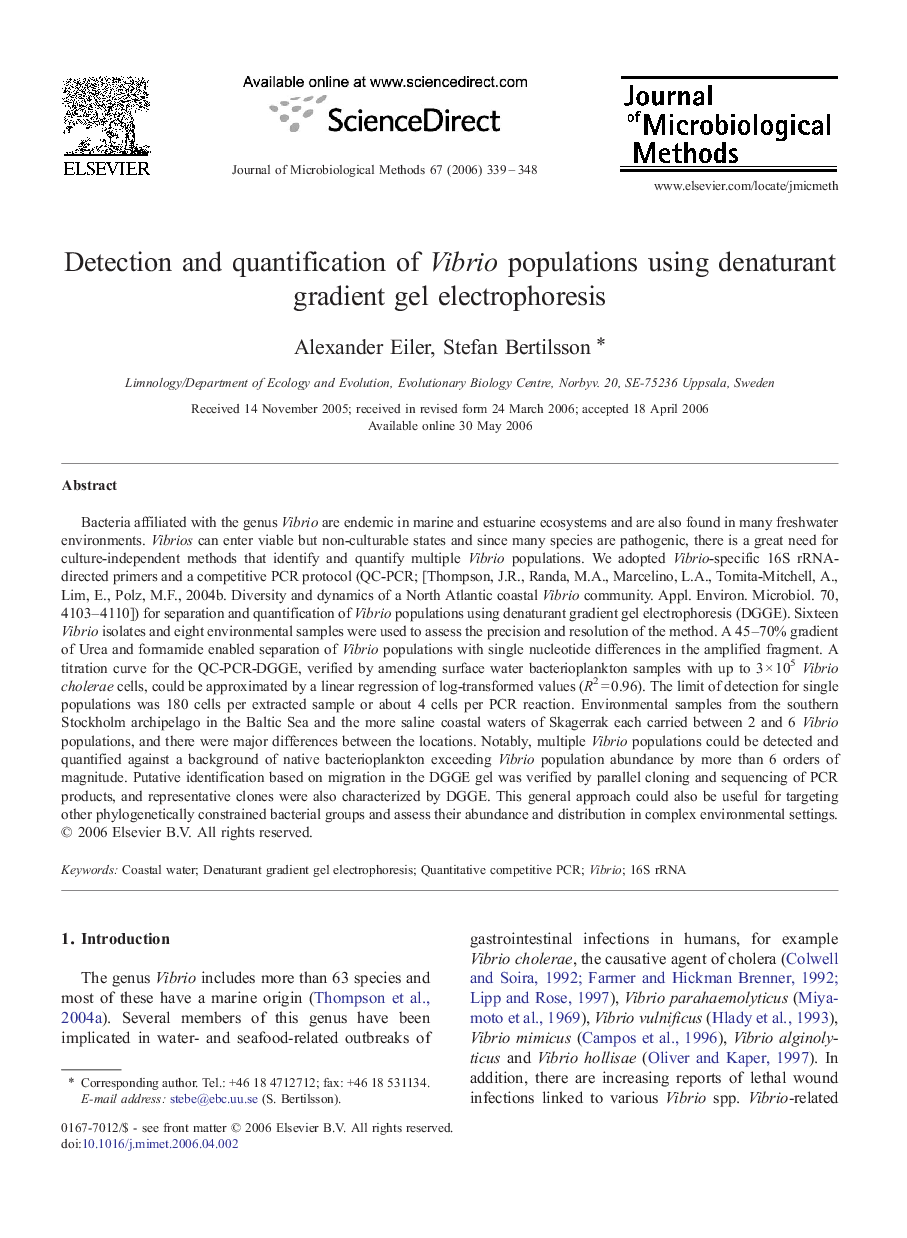| Article ID | Journal | Published Year | Pages | File Type |
|---|---|---|---|---|
| 2091933 | Journal of Microbiological Methods | 2006 | 10 Pages |
Bacteria affiliated with the genus Vibrio are endemic in marine and estuarine ecosystems and are also found in many freshwater environments. Vibrios can enter viable but non-culturable states and since many species are pathogenic, there is a great need for culture-independent methods that identify and quantify multiple Vibrio populations. We adopted Vibrio-specific 16S rRNA-directed primers and a competitive PCR protocol (QC-PCR; [Thompson, J.R., Randa, M.A., Marcelino, L.A., Tomita-Mitchell, A., Lim, E., Polz, M.F., 2004b. Diversity and dynamics of a North Atlantic coastal Vibrio community. Appl. Environ. Microbiol. 70, 4103–4110]) for separation and quantification of Vibrio populations using denaturant gradient gel electrophoresis (DGGE). Sixteen Vibrio isolates and eight environmental samples were used to assess the precision and resolution of the method. A 45–70% gradient of Urea and formamide enabled separation of Vibrio populations with single nucleotide differences in the amplified fragment. A titration curve for the QC-PCR-DGGE, verified by amending surface water bacterioplankton samples with up to 3 × 105Vibrio cholerae cells, could be approximated by a linear regression of log-transformed values (R2 = 0.96). The limit of detection for single populations was 180 cells per extracted sample or about 4 cells per PCR reaction. Environmental samples from the southern Stockholm archipelago in the Baltic Sea and the more saline coastal waters of Skagerrak each carried between 2 and 6 Vibrio populations, and there were major differences between the locations. Notably, multiple Vibrio populations could be detected and quantified against a background of native bacterioplankton exceeding Vibrio population abundance by more than 6 orders of magnitude. Putative identification based on migration in the DGGE gel was verified by parallel cloning and sequencing of PCR products, and representative clones were also characterized by DGGE. This general approach could also be useful for targeting other phylogenetically constrained bacterial groups and assess their abundance and distribution in complex environmental settings.
